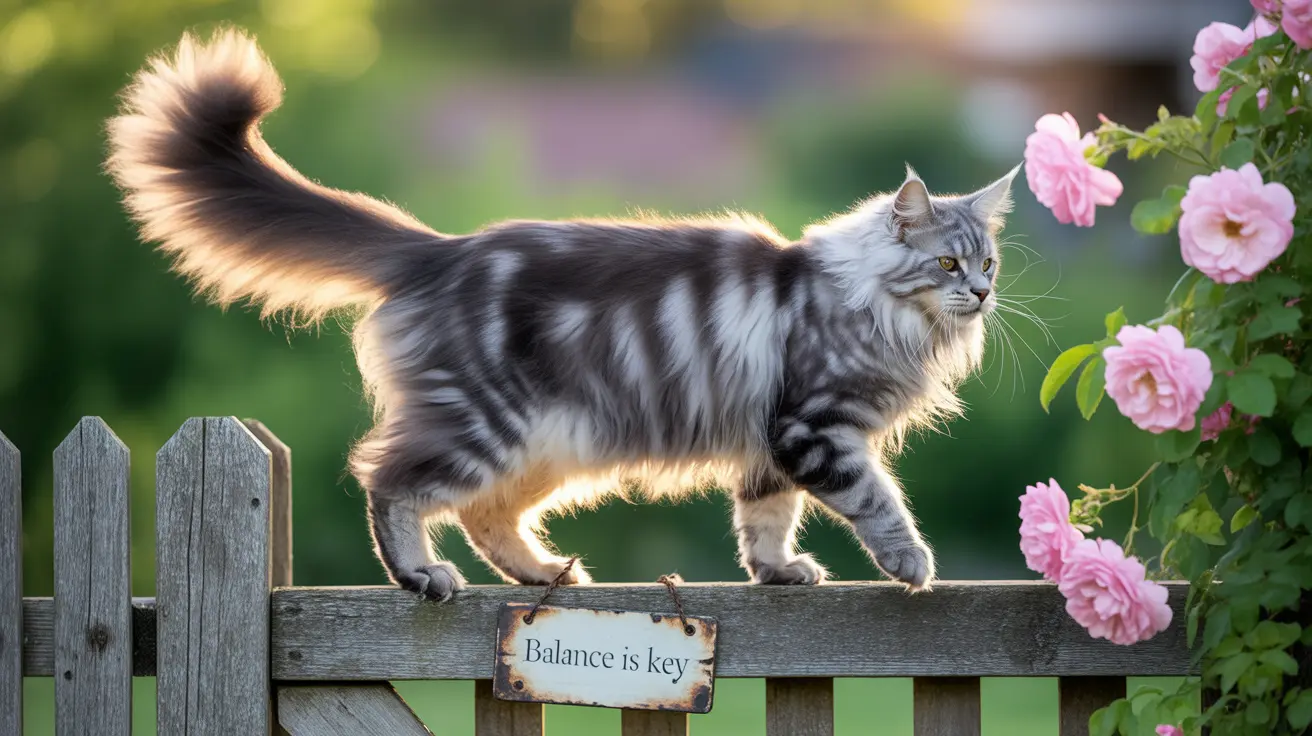A cat's tail is much more than just an elegant appendage - it's a sophisticated tool that serves multiple vital functions for our feline friends. From maintaining perfect balance during acrobatic leaps to communicating complex emotions, a cat's tail length plays a crucial role in their daily lives.
In this comprehensive guide, we'll explore why cats have such distinctive tails, how they use them, and what different tail lengths mean for various breeds. Whether you're a curious cat owner or a feline enthusiast, understanding cat tail length will give you fascinating insights into your pet's anatomy and behavior.
The Anatomy of a Cat's Tail
A cat's tail is essentially an extension of their spine, comprising 18-23 small bones called caudal vertebrae. These bones are connected by an intricate network of muscles, tendons, and ligaments that allow for incredible flexibility and precise control. This complex structure enables cats to move their tails in virtually any direction, making it an incredibly versatile tool.
The average cat tail measures between 9-12 inches in length, though this can vary significantly between breeds. This length typically represents about 10% of a cat's total skeletal structure, highlighting its anatomical importance.
The Vital Functions of Cat Tail Length
Balance and Coordination
Perhaps the most crucial function of a cat's tail is maintaining balance. When cats walk along narrow surfaces or make precise jumps, their tail acts as a counterweight, helping them adjust their center of gravity instantly. This is particularly evident when cats navigate challenging terrain or perform their characteristic acrobatic feats.
Watch a cat walking along a fence or preparing to jump, and you'll notice their tail making constant micro-adjustments. These movements help them maintain perfect balance and make split-second corrections during movement.
Communication and Expression
A cat's tail serves as a sophisticated communication tool, with different positions and movements conveying specific emotions and intentions. The length of the tail actually enhances their ability to display these signals clearly to both other cats and humans:
- A straight-up tail indicates confidence and friendly greetings
- A curved or question-mark shaped tail shows playfulness
- A low-held tail can signal submission or anxiety
- A puffed-up tail indicates fear or aggression
Breed Variations in Tail Length
Different cat breeds exhibit varying tail lengths due to genetic factors. Long-tailed breeds like the Maine Coon and Siberian cats often have especially impressive tail lengths, while breeds like the Manx and Japanese Bobtail are known for their naturally short or absent tails.
These variations are primarily determined by genetics, particularly the expression of the "T" gene during embryonic development. While most breeds develop full-length tails, some specific mutations can result in shorter or bobbed tails.
Health and Care Considerations
The tail's importance to a cat's overall health cannot be overstated. Because it contains bones, nerves, and blood vessels, injuries to the tail can have serious implications for a cat's mobility and well-being. Owners should be particularly careful to protect their cat's tail from accidents and never pull or grab it.
Regular observation of tail position and movement can also provide valuable insights into your cat's health status. Any unusual changes in tail movement or position should prompt a veterinary consultation.
Frequently Asked Questions
What determines the length of my cat's tail and why do some cats have very short or no tails?
Cat tail length is primarily determined by genetics, specifically the "T" gene. Some breeds naturally have mutations that result in shorter tails or no tails at all, like the Manx cat. These variations are usually inherited traits, though some cats may have short tails due to injury or birth defects.
How does a cat's tail help with balance and movement during jumping or climbing?
A cat's tail acts as a counterbalance, helping them maintain equilibrium during complex movements. When jumping or climbing, cats use their tail to shift their center of gravity, make mid-air adjustments, and land precisely. This is why you'll often see a cat's tail moving in the opposite direction of their body during acrobatic maneuvers.
What do different tail positions or movements mean in terms of my cat's mood and communication?
Tail positions are key indicators of a cat's emotional state. A vertical tail typically signals confidence and friendliness, while a low or tucked tail might indicate fear or submission. Rapid tail movements often signal agitation or excitement, and a gently curved tail usually means your cat is feeling relaxed and content.
Are there health concerns or special care tips for cats with naturally short or bobbed tails?
While most cats with naturally short tails adapt well, some breeds like the Manx may experience spinal issues related to their tail mutation. These cats should receive regular veterinary check-ups to monitor for potential problems. Otherwise, they generally require no special care beyond normal attention to their overall health.
Why do some long-tailed cat breeds have bushy tails, and how do cats use their tails for warmth?
Bushy tails, common in breeds like Maine Coons and Siberian cats, evolved as an adaptation to cold climates. These cats can wrap their fluffy tails around themselves for additional warmth when sleeping or resting. The extra fur also provides protection and enhanced visual communication signals.






